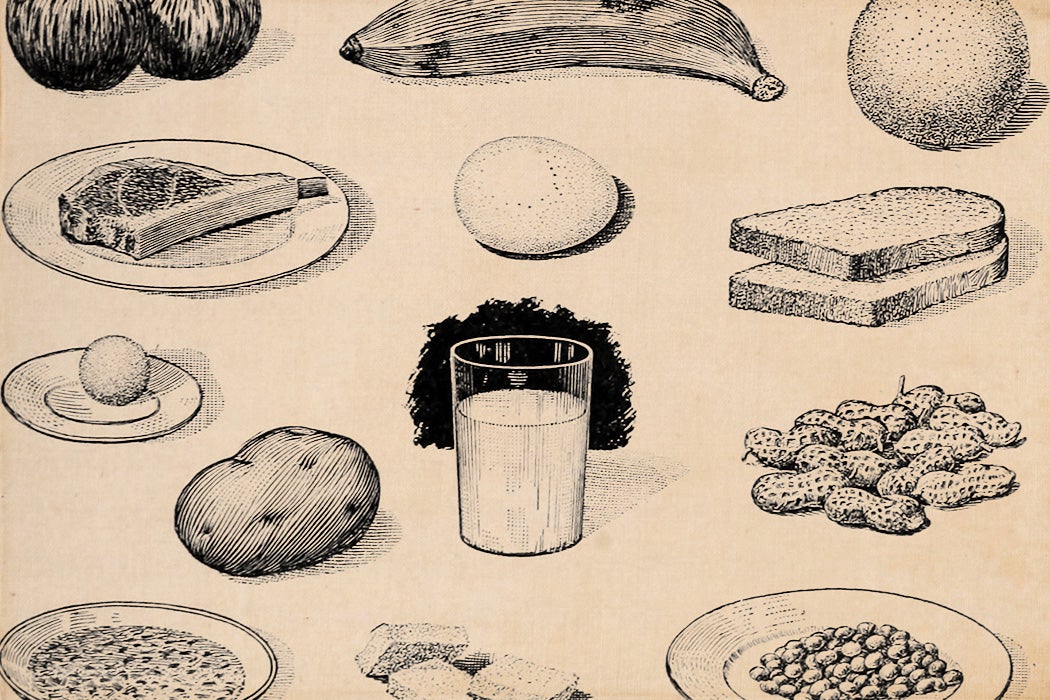If you started a new fitness regimen this year, chances are that calories are now a significant presence in your life, whether you’re looking at food labels or using exercise apps. Historian Nick Cullather writes that for well over a century, the calorie has been a tool for public understanding of not just nutrition, but also realms like labor relations and foreign policy.
Cullather writes that the penny press first introduced much of the U.S. public to the calorie in March 1896, when Wesleyan University professor Wilbur O. Atwater sealed a graduate student into an airtight chamber. Through an airlock, Atwater fed the “prisoner of science” precisely measured servings of Hamburg steak, milk, and mashed potatoes. He also monitored his exercise periods and mental exertion. The student “was inside a calorimeter, a device previously used to measure the combustive energy of explosives and engines,” writes Cullather. “It recorded his food intake and labor output in terms of thermal energy.” Atwater concluded “that mathematical laws governed the ordinary act of eating.”
For government officials, the utility of the calorie was immediately clear. It could help with efficient management of nutrition for prisons, schools, and armies. Extending Frederick Taylor’s time and motion studies, calorie counts could determine the most efficient ways of feeding an industrial workforce—an idea that workers and their unions resisted, recognizing it as a way to justify low wages.
The calorie also let scientists compare the diets of different nations. Journalists enthused about the possibilities that quantified nutrition might offer for changing the eating habits of Asians in particular. As the Review of Reviews asked, “what can we expect either of physical or moral vigor from communities who live on the physical plane of millions in the Orient?”
Of course, from today’s perspective, using the calorie as the sole measure of food value is clearly misleading. “Atwater’s schedules ranked grain, meat, and dairy goods as important national resources, while fruits, leafy vegetables, and fish registered such slight nutritional value that they could scarcely be classified as food,” Cullather writes.
Advertisers exploited the idea of interchangeable calories. A 1903 ad told potential consumers that a glass of Schlitz beer represented 137 calories, just slightly less than milk, making it “sufficient fuel to furnish abundant energy to the human machine.”
Despite complaints from doctors, who warned against this simplified understanding of nutrition, the federal government leaned on the calorie to quantify food shortages and plan international aid efforts—particularly once World War I began in Europe. In 1920, progressive Michigan governor Chase Osborne even proposed that international trade should use the calorie as a universal currency, casting it as a measure of real worth, unlike the “imaginary” value of metals.
Weekly Newsletter
To some Europeans, the American obsession with calories represented a grim tendency toward quantifying human experience. French novelist Georges Duhamel wrote that he glimpsed the “world of the future” in an American host who urged him to order oatmeal rather than potatoes because it would “give you two hundred more calories.”
Calorie obsession subsided slightly in the 1920s, as scientists informed the public of the value of vitamins, minerals, and amino acids. But, as we see from our nutrition apps today, the idea of quantifying the value of food was here to stay.







